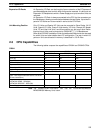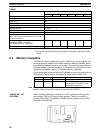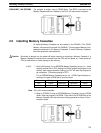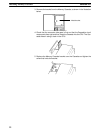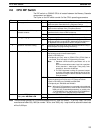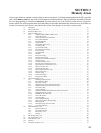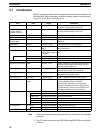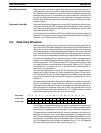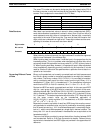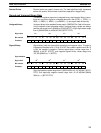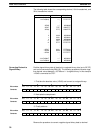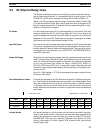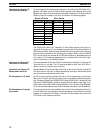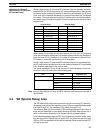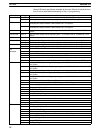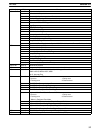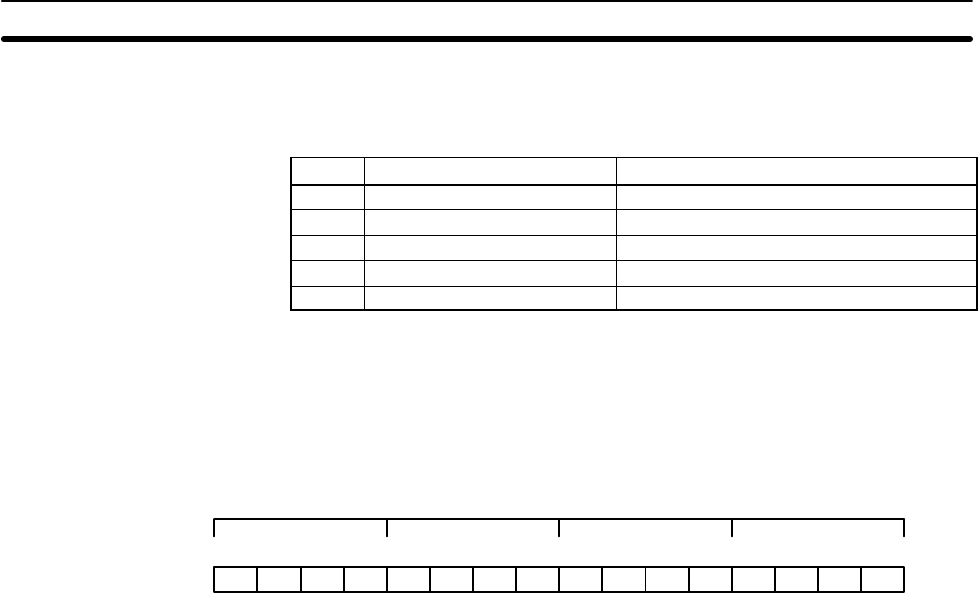
28
The same TC number can be used to designate either the present value (PV) of
the timer or counter, or a bit that functions as the Completion Flag for the timer or
counter. This is explained in more detail in
3-8 TC Area
.
Area Word designation Bit designation
IR 000 00015 (leftmost bit in word 000)
SR 252 25200 (rightmost bit in word 252)
DM DM 1250 Not possible
TC TC 215 (designates PV) TC 215 (designates completion flag)
LR LR 12 LR 1200
Data Structure Word data input as decimal values is stored in binary-coded decimal (BCD);
word data entered as hexadecimal is stored in binary form. Each four bits of a
word represents one digit, either a hexadecimal or decimal digit, numerically
equivalent to the value of the binary bits. One word of data thus contains four
digits, which are numbered from right to left. These digit numbers and the corre-
sponding bit numbers for one word are shown below.
Bit number
Contents 0000000000000000
15 14 13 12 11 10 09 08 07 06 05 04 03 02 01 00
Digit number 3210
When referring to the entire word, the digit numbered 0 is called the rightmost
digit; the one numbered 3, the leftmost digit.
When inputting data into data areas, it must be input in the proper form for the
intended purpose. This is no problem when designating individual bits, which
are merely turned ON (equivalent to a binary value of 1) or OFF (a binary value of
0). When inputting word data, however, it is important to input it either as decimal
or as hexadecimal, depending on what is called for by the instruction it is to be
used for.
Section 5 Instruction Set
specifies when a particular form of data is re-
quired for an instruction.
Binary and hexadecimal can be easily converted back and forth because each
four bits of a binary number is numerically equivalent to one digit of a hexadeci-
mal number. The binary number 0101111101011111 is converted to hexadeci-
mal by considering each set of four bits in order from the right. Binary 1111 is
hexadecimal F; binary 0101 is hexadecimal 5. The hexadecimal equivalent
would thus be 5F5F, or 24,415 in decimal (16
3
x 5 + 16
2
x 15 + 16 x 5 + 15).
Decimal and BCD are easily converted back and forth. In this case, each BCD
digit (i.e., each group of four BCD bits) is numerically equivalent of the corre-
sponding decimal digit. The BCD bits 0101011101010111 are converted to deci-
mal by considering each four bits from the right. Binary 0101 is decimal 5; binary
0111 is decimal 7. The decimal equivalent would thus be 5,757. Note that this is
not the same numeric value as the hexadecimal equivalent of
0101011101010111, which would be 5,757 hexadecimal, or 22,359 in decimal
(16
3
x 5 + 16
2
x 7 + 16 x 5 + 7).
Because the numeric equivalent of each four BCD binary bits must be numeri-
cally equivalent to a decimal value, any four bit combination numerically greater
then 9 cannot be used, e.g., 1011 is not allowed because it is numerically equiva-
lent to 11, which cannot be expressed as a single digit in decimal notation. The
binary bits 1011 are of course allowed in hexadecimal are a equivalent to the
hexadecimal digit C.
There are instructions provided to convert data either direction between BCD
and hexadecimal. Refer to
5-18 Data Conversion
for details. Tables of binary
equivalents to hexadecimal and BCD digits are provided in the appendices for
reference.
Converting Different Forms
of Data
Data Area Structure Section 3-2



